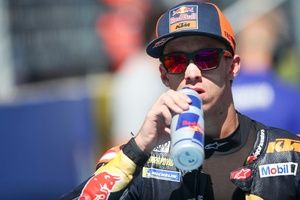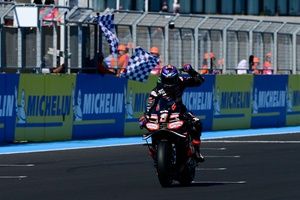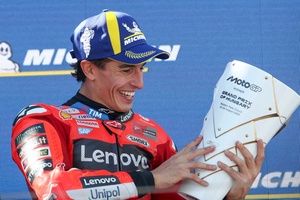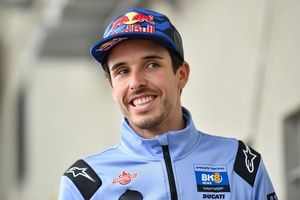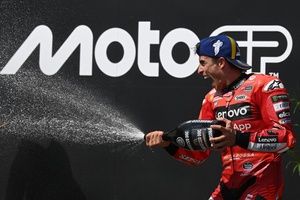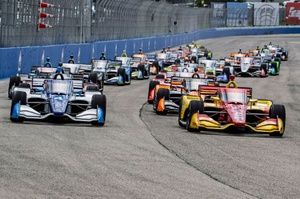Marc Marquez and Pedro Acosta are against MotoGP’s anti-highside software
The six-time MotoGP champion is no fan of the stability control system launching at the Red Bull Ring this weekend
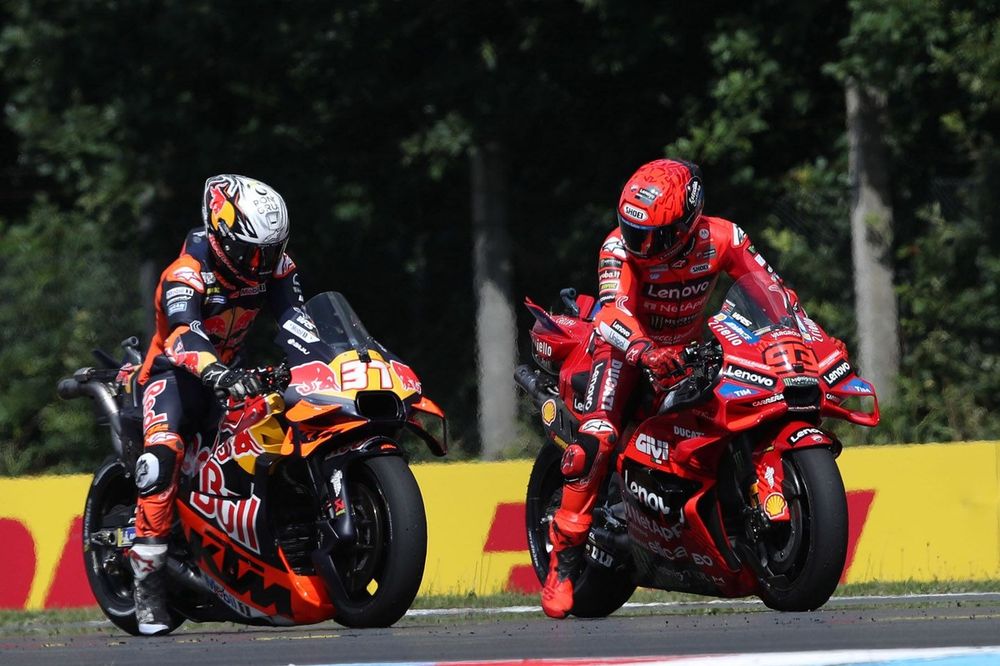
Pedro Acosta, Red Bull KTM Factory Racing, Marc Marquez, Ducati Team
Photo by: Red Bull Content Pool
Watch: What We Learned on Friday | 2025 Austrian GP
Top MotoGP riders Marc Marquez and Pedro Acosta have both hit out at the stability control system being introduced at this weekend’s Austrian Grand Prix.
MotoGP announced earlier this week that the new software, which “reduces engine torque if/when the bike slides”, would be rolled out at the Red Bull Ring.
While teams are not obliged to use the system, there will effectively be no option if it provides a competitive advantage.
Given that the series is banning ride height and holeshot devices from 2027, as well as reducing the impact of aerodynamics with that year’s new regulations, the stability control system flies in the face of the narrative that ‘rider aids’ are being phased out.
The official line is that the system is a safety measure designed to reduce the number of dangerous highside crashes.
In Thursday’s press conference ahead of the Austrian race, however, Marquez – victim of many highsides in his career, including the 2020 one that nearly ended it – voiced his opposition to the concept.
“For me, it’s clear: the more things you introduce on the bike – in this case electronics – the less difference the rider can make.

Marc Marquez, Ducati Team
Photo by: Gold and Goose Photography / LAT Images / via Getty Images
“I tested this new control at Aragon and also in the Malaysia test… and it’s just easier to ride,” continued Ducati’s championship leader. “You can be [pushing] against the control and the bike is doing everything. So, as a rider, I don’t like it. [Whether it’s for] safety or not.
“In the end, every manufacturer has a different point of view.”
Acosta, who, along with Marquez, is considered one of the more naturally talented riders on the grid, took a similar view.
“Every time we are introducing [another aid], I think we have to go the other way around,” said the Spanish KTM rider.
“Try to remove it, like we see in the new regulations for 2027, [when] we start to take out the [ride height] device and all these things. I think we have to start to think about taking out these aids that we have on the bike.”
Aprilia rider Marco Bezzecchi, however, believes that the cream will always rise to the top despite the fears that such aids will level the playing field.

Pedro Acosta, Red Bull KTM Factory Racing
Photo by: Gold and Goose Photography / LAT Images / via Getty Images
“Of course, as Marc said, the rider can make a little bit less difference,” said the Italian. “This is not the best. But in the end, when everyone [gets on] top of the setting of everything, then the rider will make the difference again. So, it’s a matter of time.”
While Marquez and Acosta’s objection hinges on the very principle of the system, the exact benefits or impact of the new software are yet to be fully understood. Riders have tried versions of it at group tests earlier in the season, but few had strong opinions on its ultimate efficacy ahead of track action starting on Friday morning.
According to MotoGP’s release, the system is “slightly different to traction control, which instead reacts to the tyre spinning.”
Share Or Save This Story
Top Comments
Subscribe and access Motorsport.com with your ad-blocker.
From Formula 1 to MotoGP we report straight from the paddock because we love our sport, just like you. In order to keep delivering our expert journalism, our website uses advertising. Still, we want to give you the opportunity to enjoy an ad-free and tracker-free website and to continue using your adblocker.


